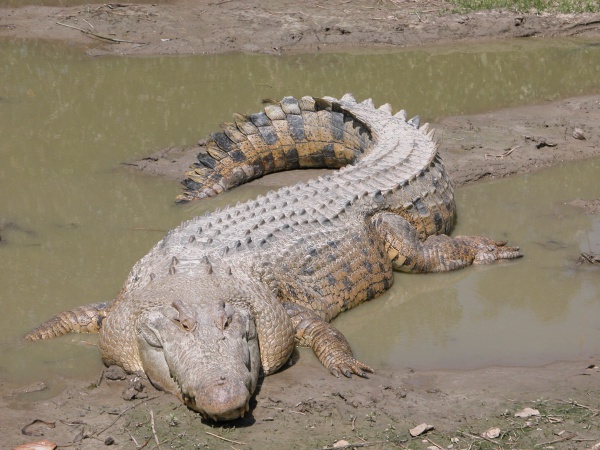Facts About Estuarine Crocodile
The saltwater crocodile, also known as the estuarine or Indo-Pacific crocodile, is an apex predator inhabiting saltwater regions across Southeast Asia, Australia, and Micronesia. It holds the title of the largest living reptile, with males reaching up to 6.3 meters in length and weighing over 1,000 kilograms. Females are comparatively smaller, typically not surpassing 3 meters in length. These crocodiles are opportunistic predators, consuming a diverse range of prey, including fish, birds, mammals, and even sharks.
Regarding classification and evolution, the saltwater crocodile is generally recognized as a single species. However, some evidence suggests the possibility of multiple species due to variations in physical appearance. Fossil records indicate that saltwater crocodiles have existed since the Pliocene epoch and share a close evolutionary relationship with the Nile and Siamese crocodiles.
Saltwater crocodiles exhibit several distinctive features such as a broad snout, oval-shaped scales, and a robust body. Sexual dimorphism is evident, with males being considerably larger than females. Their diet is extensive, comprising fish, crustaceans, mammals, and birds.
In terms of reproduction, female saltwater crocodiles lay eggs in nests along riverbanks and are highly protective of their eggs and young. Despite their vigilance, many hatchlings fall prey to other animals, resulting in only a few surviving to adulthood. These crocodiles can live for over 70 years.
Historically, saltwater crocodiles were extensively hunted for their skin and meat, but conservation efforts have led to a recovery in their populations in some regions. Nonetheless, habitat loss remains a significant threat. They are infamous for dangerous encounters with humans, occasionally resulting in fatalities. Although listed as a species of least concern, certain populations continue to face considerable pressures.
Culturally, saltwater crocodiles hold significant importance in various indigenous myths and frequently appear in art and folklore. They are also featured in popular media and are major attractions at crocodile-themed parks in Australia. Many anecdotal accounts claim sightings of exceptionally large saltwater crocodiles, some reportedly over 7 meters long, though these claims often lack scientific verification.

 India
India